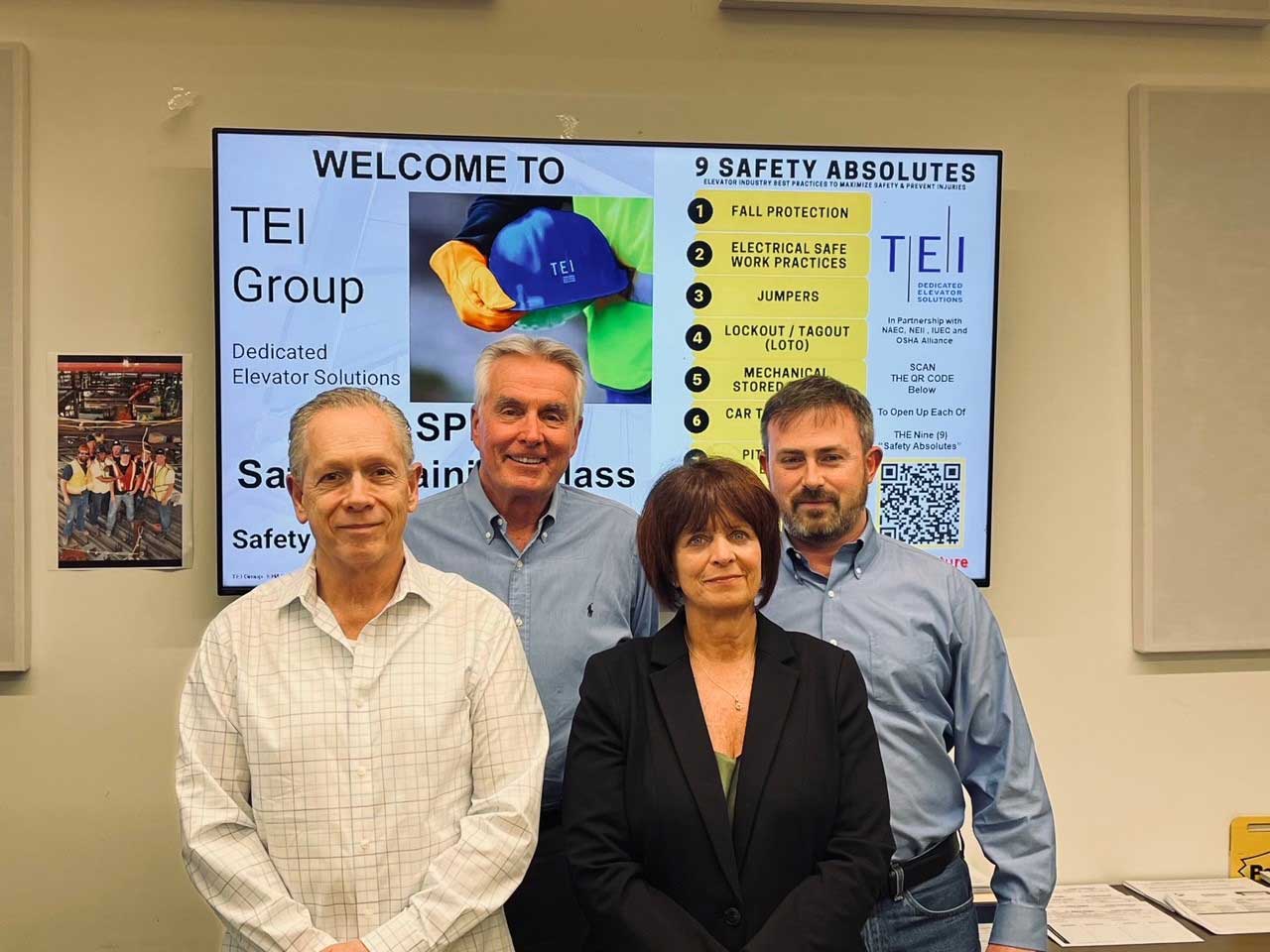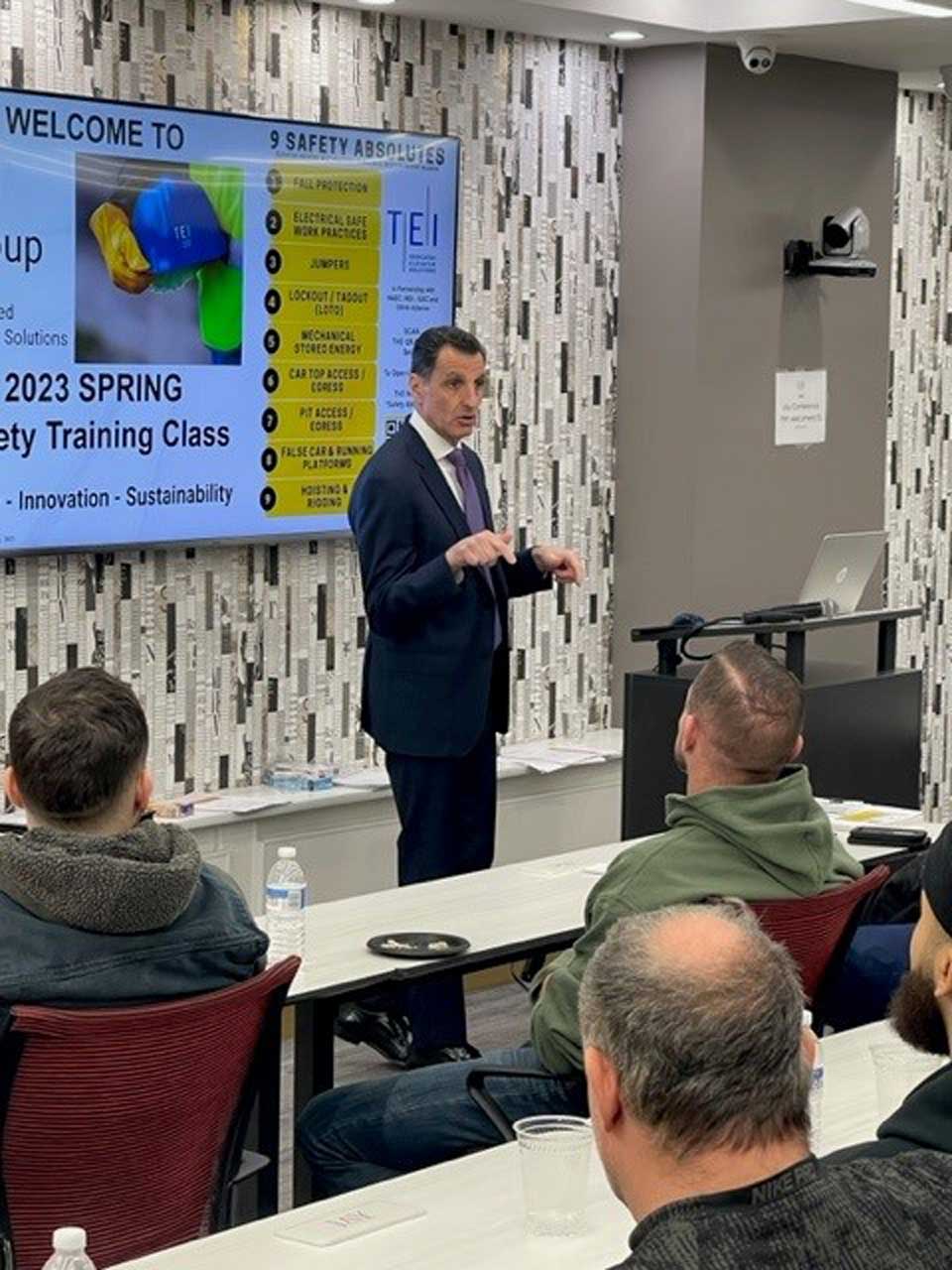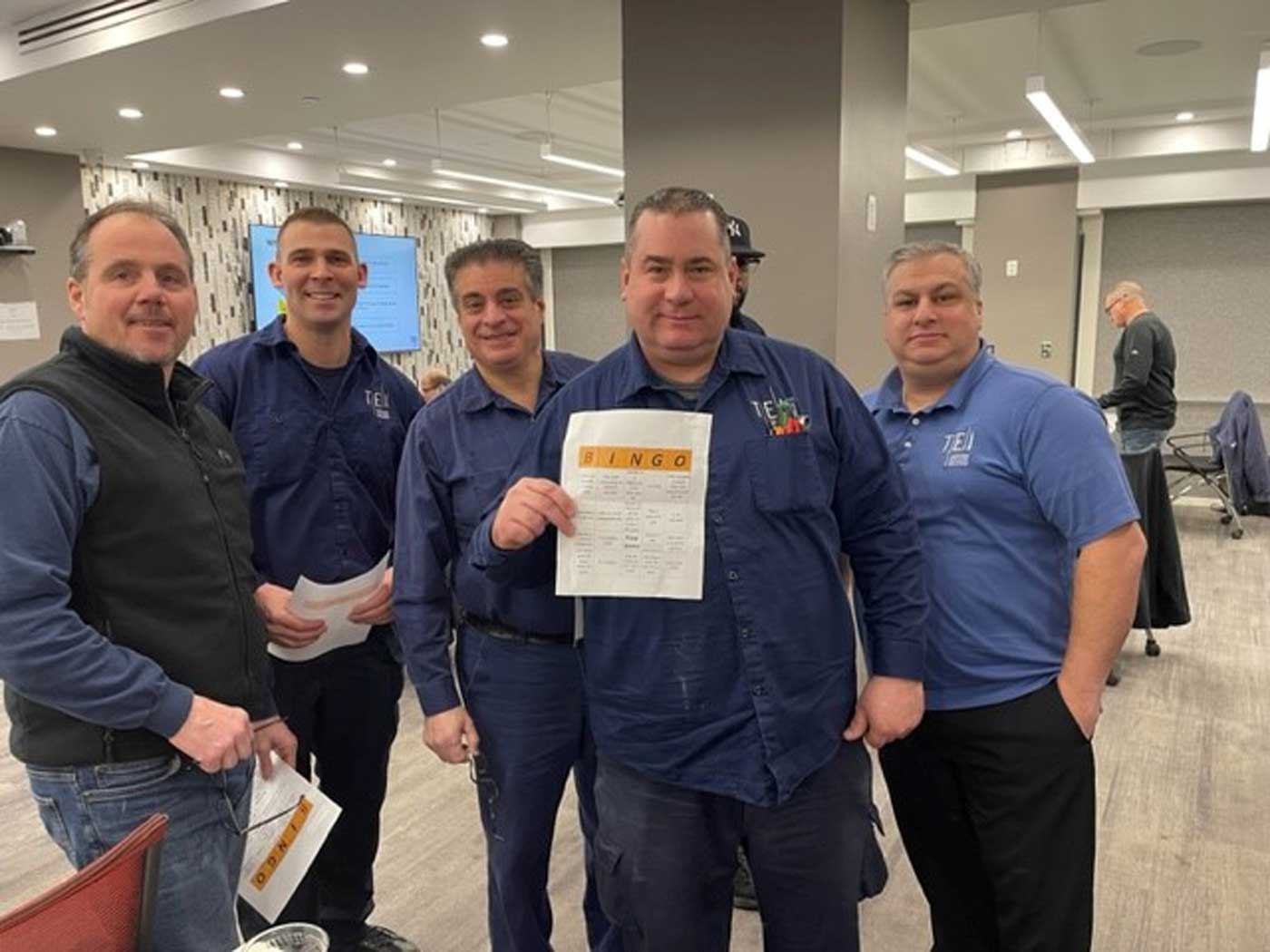TEI Group weighs in on safety training, family and leadership.
photos courtesy of TEI Group
Long Island City, NY-based TEI Group’s safety training program is 11 years in the making. With Senior VP, Environmental Health & Safety Ray Downs at the helm, the program has been adjusted “little by little” to reach its current format and level of acceptance. “The company develops all of its safety training and processes based on industry and OSHA standards,” said Downs. “The success of our program has allowed us to try new avenues to reach our employees, outside of spring and fall safety seminars.” These novel methods include emails, texts and call-ins, in addition to in-person classes.
Each spring and fall, TEI holds a safety training event for all field employees, managers and sales staff at an off-site facility over a two-day period. With union, National Elevator Industry, Inc. (NEII) and National Association of Elevator Contractors (NAEC) support, TEI seeks to provide employees with the right tools, equipment and processes to minimize inherent risks and do their jobs safely. A refresher on TEI’s core values — safety, integrity and quality — is an essential part of the biannual, 4-h courses.
Classroom training was once the only way to share updates. Now, managers and field employees receive toolbox talks covering industry problems and internal concerns delivered weekly to their inboxes. The toolbox talks take around 15-30 min to read and touch on NEII’s 9 Safety Absolutes. To address the industry-wide challenge of measuring field employees’ understanding of training content, Director of Environmental Health & Safety Michael Luraschi put forth the practice of including a question and answer section after each talk to assess comprehension. TEI also sends out a safety calendar — another effort to reinforce potentially life-saving reminders. Over the course of a year, TEI field employees receive a minimum of 8 h of classes and 16 h of toolbox talks.

Downs acknowledges that the elevator industry has had its fair share of “bumps in the hoistway.” To mitigate risks, TEI managers conduct 48 field compliance assessments a year, and the safety department regularly goes out to observe that processes are employed and equipment is used the right way. Third-party auditors are also brought in to test and verify compliance. “Safety is not used as a disciplinary form,” Downs said. “If someone does something wrong, we retrain, refresh and move on. I preach to them there are a lot of different things in life, and your family is the most important one.”
The overarching theme of TEI’s safety messaging is “your family depends on you.” Downs said that while the program allows the company to be competitive in a “very demanding and dangerous” market, it is also a way to demonstrate to its employees that the company cares about their families and livelihoods. “It’s an investment when you educate your employees and elevate their skillsets,” he said. “Our employees can feel proud that the company takes their safety as seriously as profit.”
The program receives “125% support” from President Mark Gregorio and Executive VP, Operations Michael Staub. They address the group at training courses, making sure employees know their safety is the company’s top concern. “Without the support of the C-suite, implementing a safety program is a difficult task,” Downs commented. “Our leadership has made sure to provide the resources and opportunities to bring all employees out of the field and into a classroom setting to receive the most current information on safety standards and products.”

TEI’s safety team doesn’t take this support for granted; not all companies have the resources or capability to develop their own training content. Downs and Luraschi feel that it is critically important to have standardized safety programs for the entire vertical-transportation (VT) industry, versus individual safety programs for each company. “If a business needs assistance, they shouldn’t be afraid to reach out to safety professionals, consultants or another company with a bigger program,” Luraschi said. “We are in it for the same reasons, and regardless of the company, we all want our field employees to do the right thing and go home safely.” He encourages anyone who wants to improve their company’s training to lean on the Elevator Industry Field Employees’ Safety Handbook (available atelevatorbooks.com) and resources from NEII, NAEC and OSHA.
Staub emphasized that constant repetition of safety messages is important for protecting the riding public, as well as technicians, from harm. He said:
“Throughout the organization and the industry and trade, there is one common goal: Keep everyone safe. It’s been the same 9 Safety Absolutes from day one. It has become second nature for our technicians, embedded in their brain and muscle memory.”
TEI is proud of its safety program and the example they set inside and outside of the industry. “Often, I go on jobsites, and other construction trades admire what we do,” Staub said. “If there’s an issue, they follow our lead through osmosis and try to emulate what we do.” Within the VT industry, TEI recognizes that, regardless of the logo on a technician’s shirt, the installation, service, maintenance and repair process has not changed in decades. “That’s why it is so important that we push forward with all of the industry leaders to a standardized safety program,” said Downs. He hopes this goal is something the industry can strive for “sooner rather than later.”
Get more of Elevator World. Sign up for our free e-newsletter.










